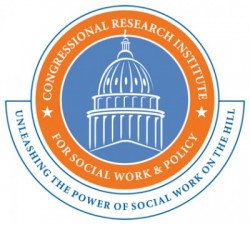House Ways and Means Committee Chair Paul Ryan (R-WI-1) has put his imprint on proposed legislation to reauthorize the Temporary Assistance for Needy Families (TANF) program and that could be a good development for social workers because if Ryan gets his way, every TANF recipient will have a caseworker who will craft and Individual Opportunity Plan (IOP) outlining an individual’s preparedness for employment and what resources are needed to overcome barriers. These plans will require states to provide timelines for meeting recipients’ needs and assisting them with finding employment. The law does not state social workers should be providing these services, but no other profession is better equipped to provide and manage these new federal mandates.
The Ways and Means Subcommittee on Human Resources, chaired by Rep. Charles Boustany, Jr., released a draft reauthorization bill last month that delineated proposed changes to TANF. The program, inaugurated in 1996 with Public Law 104-193—the Personal Responsibility and Work Opportunity Act—not undergone a full reauthorization since 2005. Congress has extended benefits yearly with continuing resolutions but Republicans are eyeing a full reauthorization this year. However the September 30 deadline is quickly approaching and with several major legislative challenges waiting on them when they return from recess on September 8th, it is unlikely the reauthorization gets done this year.

Whenever the legislation gets done, the proposed new services will be costly and labor intensive. Keep in mind that the basic block grant—set at $16.5 billion since 1996 has not been increased and as a result has lost one-third of its value due to inflation. Some states will find it difficult, if not impossible to hire credentialed social workers to do IOPs. They are more likely to put people’s lives and wellbeing in the hands of insufficiently-trained paraprofessionals. The new law would also require stricter adherence to a 50 percent work participation rate. The Center for Law and Social Policy (CLASP) warns that states will be hard-pressed to find the resources to provide services for all needy families and may be tempted to create procedures that will “cream” poor families and make it harder for more disadvantaged families to get assistance.
The draft of the new law includes improvements such as expanding work-related criteria—job search and job readiness activities, increasing the time limit for vocational training from 12 to 24 months, and lifting the age ceiling for satisfactory school attendance from 19 to 25 years. The bill would also eliminate the so-called marriage penalty by eliminating the 90 percent participation rate and higher hourly requirement for two-parent families.
This new approach to providing a social safety net for poor families with children fits within the narrative of the new normal in the American society—that is the government is accumulating unprecedented and unsustainable debt and everyone must tightened their belt and learn to do with less, with the exception, of course, of the wealthy. The Reagan and Bush tax cuts that redistributed income to the wealthiest Americans was designed to reduce, if not eliminate the welfare state. Conservatives want to wean Americans off their dependence on federal government assistance. If you need money and food, get a job. In 2013, TANF provided cash assistance to 26 out of 100 poor families compared to the 68 out of 100 poor families who received cash assistance under the phased-out Assistance to Families with Dependent Children (AFDC) program replaced by TANF in 1996.
CLASP would like TANF appropriations increased by at least $5 billion to at least get it to the 1996 level and they would like the new workforce participation rate requirement phased in over several years to give states time to reorganize services. The National Association for Social Workers (NASW) recommends the new law increase the floor for cash benefits to 100 percent of the poverty line. It is currently less than 50 percent of the poverty line in most states. NASW would also like to see criteria for work expanded to include higher education, ESL, literacy, vocational training and elementary and secondary education and barriers to employment—physical and mental health, substance abuse, disabilities, and domestic violence—be addressed.
The new bill adds poverty reduction as a TANF goal but this gets accomplished only through employment. NASW is right to challenge Congress to consider barriers to employment and devise strategies and provide resources to address them. Republicans believe there is enough in the new bill to convince Democrats to join with them in getting this through Congress. Social workers should pay special attention to the provisions in the bill as the contents are settled.
Written By Charles E. Lewis Jr., Ph.D
TANF Reauthorization Could Be a Boon for Social Workers was originally published @ Congressional Research Institute for Social Work and Policy » Charles Lewis and has been syndicated with permission.
Sources:
Our authors want to hear from you! Click to leave a comment
Related Posts






